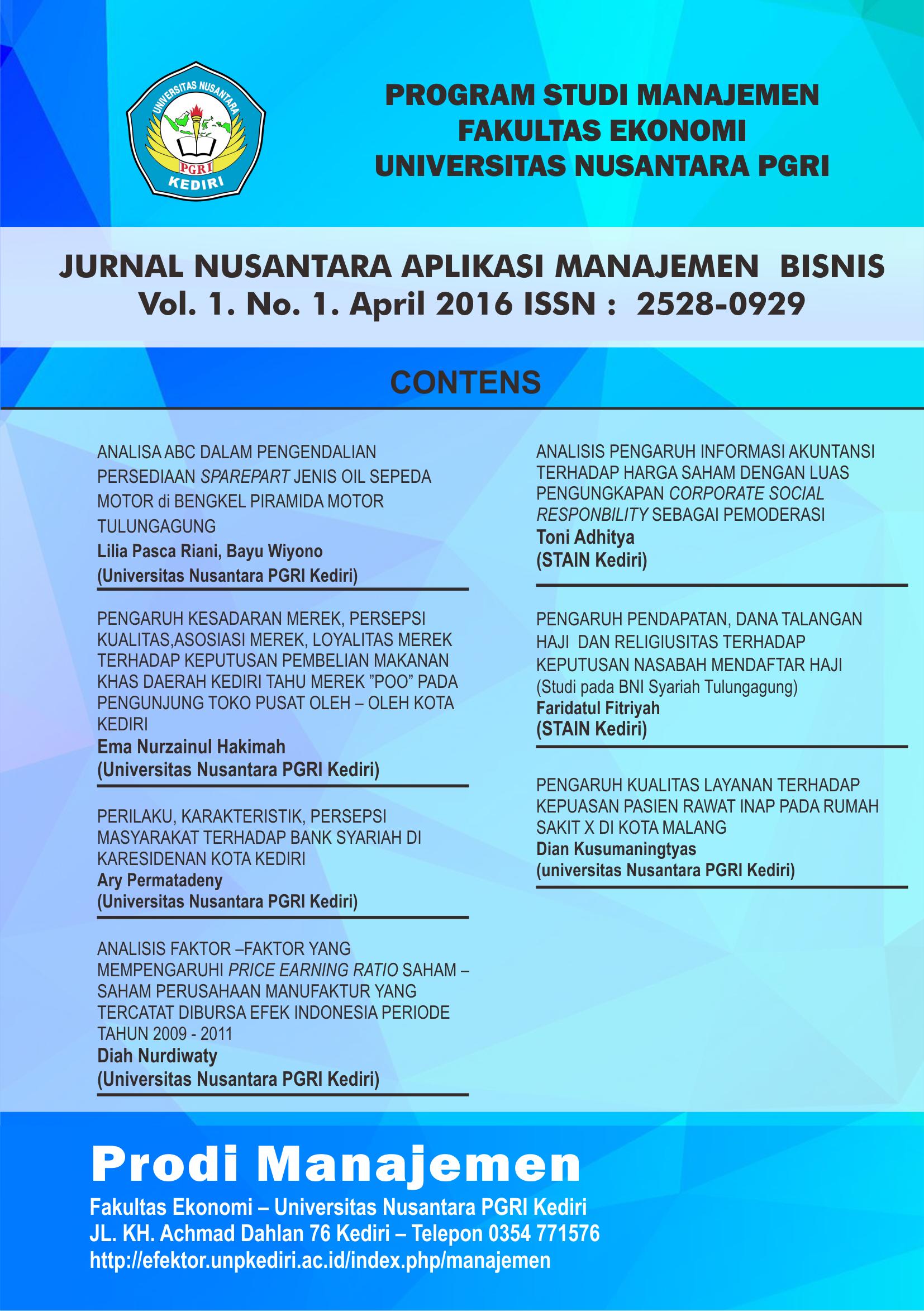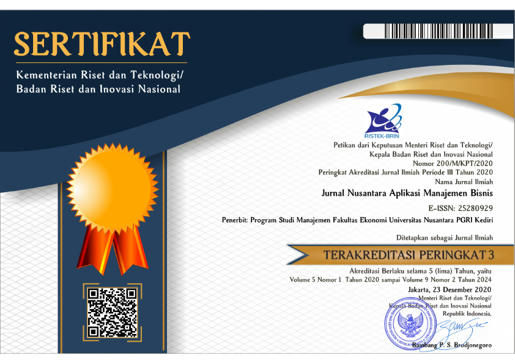ANALISIS PERAMALAN PERMINTAAN PRODUK NATA DE COCO UNTUK MENDUKUNG PERENCANAAN DAN PENGENDALIAN PRODUKSI DALAM SUPPLY CHAIN DENGAN MODEL CPFR (COLLABORATIVE PLANNING, FORECASTING, AND REPLENISHMENT)
DOI:
https://doi.org/10.29407/nusamba.v2i2.924Keywords:
Demand Forecasting, Production Planning and Control, Time Series Method, CPFR ModelAbstract
Effective business process strategy in the application of SCM (Supply Chain Management) is the use of collaborative planning, forecasting and replenishment (CPFR) methods where producers, distributors and retailers work together to plan, forecast and fill return products sold in the market. The purpose of this study is to describe the process of preparing collaborative forecasting between Supply Chain partners by referring to the CPFR model workflow in micro-scale manufacturing business and finding the most effective and efficient forecasting methodology that can be used as the basis for decision making in planning and production control throughout the supply chain. Forecasting analysis using time series model with 3 methods of Moving Averages with 4 month time period, Trend Projection exponential smoothing method with α = 0.1, α = 0.5, α = 0.9 and Linear Regression (Least Squares). The results show that the Linear Regression (Least Squares) method is the most effective method that can be used as the basis for decision making in production planning and control throughout the supply chain.
Keywords: Demand Forecasting, Production Planning and Control, Time Series Method, CPFR Model
Downloads
References
Andraski, Joe. The new model of CPFR.
Eka, Faizal Santria. (2010). Analisis Pengendalian Persediaan Bahan Baku dengan Metode EOQ pada Perusahaan Handuk Lumintu di Klaten. Surakarta : Tugas Akhir Program Studi Diploma III Manajemen Industri
Fakultas Ekonomi Universitas Sebelas Maret
Surakarta.
Fahmi, Irham, (2012). Manajemen Produksi dan Operasi. Bandung : Alfabeta.
Handoko, T. Hani. (1999). Dasar - Dasar Manajamen Produksi dan Operasi, Edisi Pertama, Cetakan Keduabelas, Penerbit BPFE, Yogyakarta.
Heizer, Jay, Barry Render. (2015). Manajemen Operasi Manajemen Keberlangsungan dan Rantai Pasokan. Jakarta : salemba Empat.
Kurnia, Ardha Sari Yudha Putri. 2010. Skripsi Perancangan Sistem Pendukung Keputusan
Untuk Mendukung Collaborative
Planning And Forecasting
(studi kasus: PT. Sinar Niaga Sejahtera Surakarta). Surakarta: Teknik Industri Fakultas Teknik
Universitas Sebelas Maret
Surakarta.
Putra, Ilsan dkk. Peramalan permintaan dan perencanaan produksi dengan mempertimbangkan special event di PT Coca-Cola Bottling Indonesia (PT. CCBI) Plant-Pandaan. Surabaya.
Pujawan, I Nyoman dan Mahendrawathi ER, Institut Teknologi Sepuluh Nopember. (2010). Supply Chain Management. Surabaya : Guna Widya.
Raharja Alda, dkk. Penerapan Metode Exponential Smoothing untuk Peramalan Penggunaan Waktu Telepon di PT. Telkomsel Divre3 Surabaya. SISFO-Jurnal Sistem Informasi. Fakultas Teknologi Informasi, Institut Teknologi Sepuluh November Kutisari Indah Utara X/18, Surabaya.
Stevenson William J & Sum Chee Chuong. (2014). Manajemen Operasi perspektif Asia. Jakarta : Salemba Empat.
Sukanta. Kajian Konsep Metode Peramalan Pada Industri Manufaktur Untuk Menunjang Perencanaan Produksi. Jurnal Ilmiah Solusi Vol. 1 No.1 Januari – Maret 2014: 41-54 Fakultas Teknik, Program Studi Teknik Industri, Universitas Singaperbangsa Karawang.
Stevenson, William J & Sum Chee Chuong. (2014). Manajemen Operasi perspektif Asia. Jakarta : Salemba Empat.
Sumayang, Lalu, (2003). Dasar - Dasar Manajemen Produksi dan Operasi, Edisi Pertama, Penerbit Salemba Empat, Jakarta.
Toiviainen, Tuomas & Jeffrey Hansen. (2011). Collaborative Planning, Forecasting, and Replenishment Research. Paper 2/2/2011IOM 483 – Operations Consulting – Spring.
Voluntary Interindustry Commerce Standards (VICS). 2004. Collaborative Planning,
Forecasting and Replenishment
(CPFR®). Association CPFR is a Registered Trademark of VICS.
Downloads
Published
Issue
Section
License
Authors who publish with this journal agree to the following terms:
- Copyright on any article is retained by the author(s).
- The author grants the journal, the right of first publication with the work simultaneously licensed under a Creative Commons Attribution License that allows others to share the work with an acknowledgment of the work’s authorship and initial publication in this journal.
- Authors are able to enter into separate, additional contractual arrangements for the non-exclusive distribution of the journal’s published version of the work (e.g., post it to an institutional repository or publish it in a book), with an acknowledgment of its initial publication in this journal.
- Authors are permitted and encouraged to post their work online (e.g., in institutional repositories or on their website) prior to and during the submission process, as it can lead to productive exchanges, as well as earlier and greater citation of published work.
- The article and any associated published material is distributed under the Creative Commons Attribution-ShareAlike 4.0 International License












